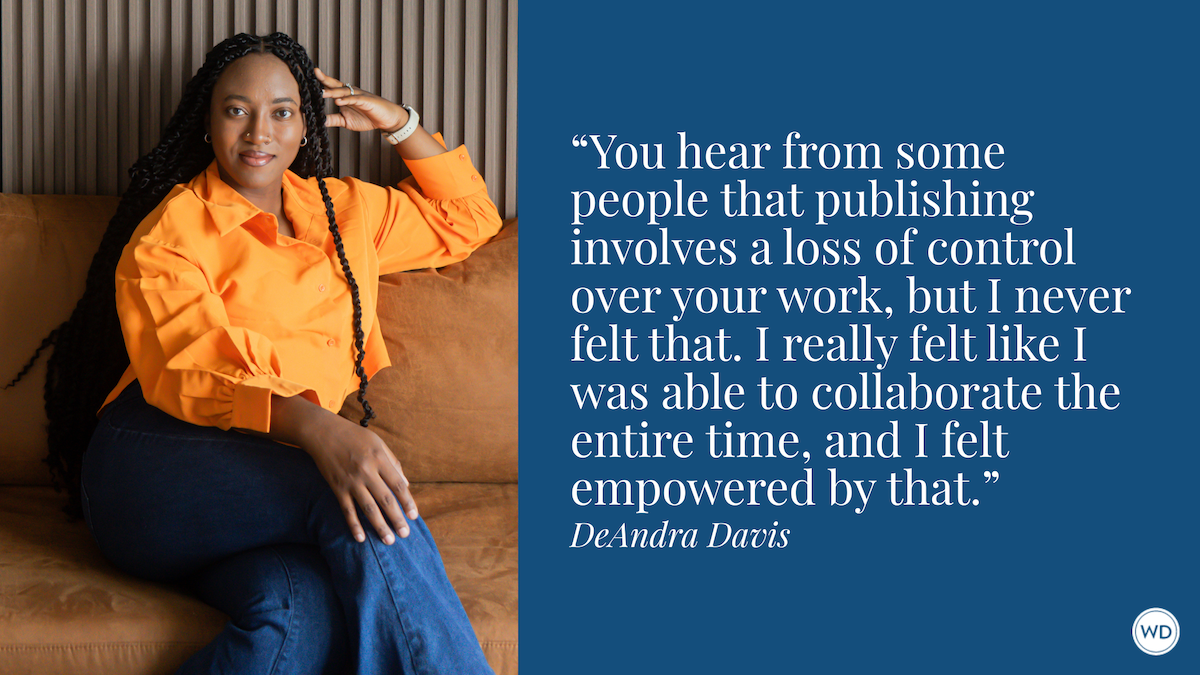Making Magic, Part 2: Structuring Your Unique System
In the last of this article mini-series, WD editor Moriah Richard explains the key components to a hard magic system and gives you some tips on building your own.
So, you want to write about magic, eh? I don’t blame you—magic is super cool. But there are a lot of people out there who write about it. How can we go about making our magic seem new and innovative?
In my humble opinion, it’s not the magic that needs to feel new for readers; it’s what your characters do with the magic. And to be able to achieve that, we first need to understand how it works.
In Part 1, I discussed the magical spectrum popularized by author Brandon Sanderson in his series of articles on magic systems and world-building. In this article, we’ll be discussing how to actually craft your own system.
Let’s Make Magic
First, a disclaimer: I struggled a lot with how to structure this article. With world-building, as with all writing, there is no one correct way to go about it. Instead, I thought back to when I was first constructing a magic system for my work-in-progress and decided to share with you what was most helpful to me. Because of my love of World of Warcraft (WoW) and Dungeons & Dragons (D&D), a lot of my examples come from there, but if I were to explain those magic systems in full detail, we’d never be done. Instead, I’ll give brief (and incomplete) overviews. The goal here is to give you some good jumping-off points for your own creations, not create an end-all-be-all list of to-dos.
As with most of my articles in this series, I will ask questions that allow us to explore the topic.
1. Where does it come from?
D&D splits its magic system into two broad categories: the arcane and the divine. Arcane magic stems from the world around the caster and divine magic comes from the realms of gods and demons.
In WoW (which was based on D&D), all magic comes from the cosmic forces that created the universe. There’s a long list, but some examples are Light and Shadow. Life and Death are some others. All of these forces exist in balance; you cannot have one without the other.
It’s important to note here that you don’t have to have all the answers for your readers. Unless it’s integral to the plot of your story, we probably won’t need to know exactly how the universe came to be; being able to say, “It came from the realm of the gods” or “Magic was a force that existed in all living creatures from the start” is usually enough to satisfy the reader and make your magic system feel grounded and rich.
Here are some questions to ask yourself:
- Is magic tied into the world’s creation myth? If not, how was it introduced into the world?
- Will all magic users get their power from a single source or will there be varying sources of magic?
- What is the name of the source (or sources) for your magic?
2. How is it accessed/who is using it?
Schools (or classes) are a really easy way for writers to diversify the magic used in their worlds. The first one that popped into my head just now was the difference between Witcher and mage magics in Andrej Sapkowski’s Witcher series; they have different rules, limitations, incantations, etc.
In D&D, there are seven schools, each with a unique focus. Casters can access both arcane and divine magic or might be limited to just one source, depending on their school. I won’t list them all here, but some examples are Abjuration (focused mainly on spells of protection and spells that interrupt other spells or magical effects) and Transmutation (focused on the ability to change matter).
Each of the cosmic forces in WoW further break down into differing types of magic. Light begets holy magic; Shadow (also called Void) manifests as shadow magic. Life appears as nature magic; Death is necromantic magic. The list goes on. In WoW, casters are placed in various classes that are generally bound to only one of these types of magic. For example, Priests are practitioners of holy magic while Druids use nature magic.
Because D&D and WoW are games, each player starts knowing a limited number of spells, and then as they gain experience by overcoming challenges in the game, they’re given more spells to get stronger and stronger. Writers, on the other hand, are not bound by the limitations of gameplay. While a lot of narratives do stick with the traditional hero’s journey, there are plenty of great stories that don’t. What would happen if a master necromancer discovered from one of his reanimations that there was a sinister plot afoot? Or a coven of witches finds out that their ability to use magic is waning? We can decide how and when our characters acquire magic, how they learn to use it, and what they need to master it.
Here are some questions to get you started:
- Are there different types of magic? If so, what differentiates them?
- Does magic have a will of its own?
- Are casters born with the ability to use magic or do they learn it?
- Is it dependent on race or genetics or age?
- How do they acquire it (gift from a god, pact with a demon, magical object, secret knowledge, etc.)?
- Does it need any special tools or symbols to channel it (like wands, staffs, hand signs, etc.)?
3. What are its costs and limitations?
Limitless magic can be frustrating to a reader because plot problems are easily solved. Need to bring a comrade back from the brink of death? There’s a spell for that! Want to manipulate a political rival? There’s a spell for that too!
In Wow and D&D, magic is limited so that the games aren’t as easily won. It forces gamers to figure out how to overcome challenges and meet goals by working with what they have. If you’ve ever played a healing class and run out of mana in a dungeon (thereby losing your ability to heal your teammates), you’ve felt that sick swoop in your gut—everyone could very well die because you didn’t pay attention to how much of your magic you were using. There’s a lesson for the writer to learn here: By limiting the magic in your universe, you can create a natural conflict.
In the film Kiki’s Delivery Service, when Kiki loses faith in herself, she loses her ability to use magic or communicate with her familiar. In the YA novel Serpent & Dove by Shelby Mahurin, witches cannot use their powers without giving something in return (like a blood offering or breaking a finger), meaning they need to be careful about how much they use at any given time. To dive into less specific examples, it’s fairly well-known that werewolves will be killed by a silver bullet and that vampires will burn in the sun—these, too, limit how these beings can move about the world. The examples for limits in magic go on and on, and for good reason. They keep things interesting!
Knowing this, here are some things to get you thinking:
- What are your magic’s limitations?
- How much magic can one caster use?
- Is there a physical/mental cost?
- Is there a consequence to using it?
- Does it have a specific weakness? How could someone defeat a caster?
- What are the rules around using it? Can those rules be broken?
- Can it be stolen or suppressed?
4. Can you engage the reader’s senses?
My last piece of advice for you is to be sure to engage your reader’s senses when it comes to magic. By making magic as tangible as possible for your readers, you’ll ground it in the reality of your world, and make your story a sensory delight that will keep your readers hooked!
These questions are pretty straight-forward:
- What does it feel like to cast magic?
- Is there a sound or smell or visual effect when it’s cast?
- Does magic have a specific taste?
I hope these articles have started you on the path to creating your own unique, exciting magical system! Thanks for sticking around, and I’ll see you for the next world-building article.
Since obtaining her MFA in fiction, Moriah Richard has worked with over 100 authors to help them achieve their publication dreams. As the managing editor of Writer’s Digest magazine, she spearheads the world-building column Building Better Worlds, a 2023 Eddie & Ozzie Award winner. She also runs the Flash Fiction February Challenge on the WD blog, encouraging writers to pen one microstory a day over the course of the month and share their work with other participants. As a reader, Moriah is most interested in horror, fantasy, and romance, although she will read just about anything with a great hook.
Learn more about Moriah on her personal website.








